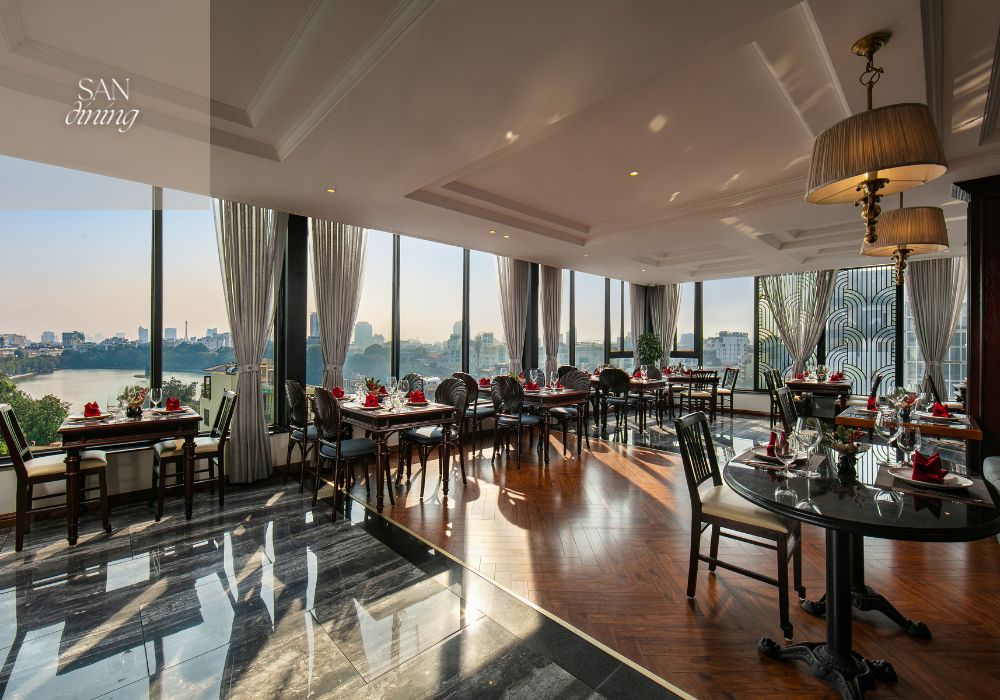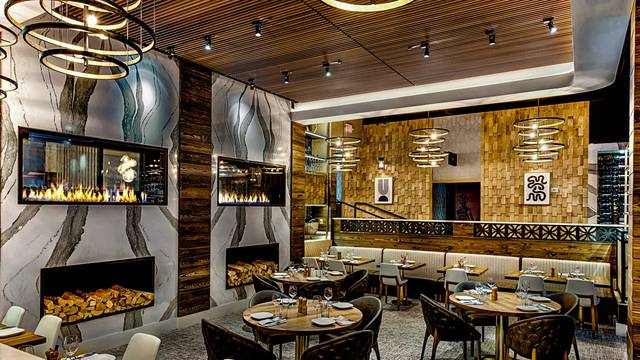Fine Dining Experience Islamabad: Indulge in Elegant Culinary Delights
Fine Dining Experience Islamabad: Indulge in Elegant Culinary Delights
Blog Article
Savor Authentic Asian Cuisine With a Pan-Asian Spin for a Culinary Journey
Embarking on a cooking trip through genuine Oriental food, improved with a Pan-Asian spin, uses an one-of-a-kind chance to explore the abundant tapestry of flavors that define the region's diverse cooking customs. This experience invites you to relish the exquisite equilibrium of preferences-- wonderful, salted, spicy, and sour-- balanced by fragrant herbs and spices. Imagine the cutting-edge blend of Thai curry and ramen or the unexpected delight of sushi burritos. As you consider these attracting recipes, take into consideration the social narratives and historical influences that shape them, each bite using a story waiting to be uncovered.

Checking Out Pan-Asian Flavors
In the world of global gastronomy, Pan-Asian food stands apart for its remarkable diversity and the unified interplay of flavors from different Oriental societies. This cooking approach commemorates the special components and rich traditions located across the continent, developing a tapestry of tastes that is both satisfying and fascinating. Secret to Pan-Asian cuisine is its capacity to balance contrasting tastes-- sweet, salted, spicy, and sour-- while highlighting the freshness and high quality of each ingredient.
From the umami-rich soy sauce of Japan to the fiery chili peppers of Thailand, Pan-Asian food provides a comprehensive combination of tastes. These aspects are usually combined in innovative methods, improving recipes with layers of complexity. For instance, making use of aromatic herbs such as lemongrass and cilantro, typical in Vietnamese and Thai cuisine, adds a refreshing illumination to recipes, while the consolidation of coconut milk supplies a luscious, rich appearance.
The focus on fresh fruit and vegetables and fragrant seasonings guarantees that each meal is not just a banquet for the preference buds but likewise for the senses. Pan-Asian cuisine welcomes restaurants to start a cooking journey, exploring the huge and differed landscapes of Asian gastronomy with every bite.
Combination Meals to Attempt
While Pan-Asian cuisine is commemorated for its standard flavors, the modern culinary landscape is progressively accepting fusion meals that mix these traditional aspects with impacts from other areas. This innovative method not just honors the abundant heritage of Asian cooking arts however additionally introduces novel taste experiences that appeal to contemporary tastes buds.
An archetype of such a fusion meal is the Korean-Mexican taco, where marinated bulgogi beef is wrapped in a cozy tortilla, covered with kimchi and a zesty gochujang-infused salsa. This mix marries the vibrant, tasty flavors of Korea with the vivid, fresh components of Mexican food. In a similar way, sushi burritos have actually acquired appeal, integrating the delicate virtuosity of Japanese sushi with the hearty, hand-held ease of a burrito, often including combination components like tempura shrimp and avocado with a drizzle of wasabi mayo.
An additional notable meal is Thai curry ramen, which instills the velvety, fragrant flavors of Thai curry into the comforting broth of conventional Japanese ramen, developing a harmonious blend that tantalizes the detects. These blend dishes expand beyond simple novelty; they represent a culinary dialogue in between cultures, encouraging expedition and advancement in the globe of Pan-Asian cuisine.
Crucial Components and Seasonings
To really value Pan-Asian cuisine, one need to understand the important components and flavors that form its foundation. This diverse culinary style attracts from an abundant tapestry of Asian customs, utilizing an unified blend of appearances and tastes.
Aromatic components are critical, with lemongrass, ginger, and garlic being ubiquitous throughout various Pan-Asian dishes. These active ingredients offer an aromatic base that improves the intricacy of tastes. Seasonings such as celebrity anise, explanation cardamom, and cinnamon introduce heat and character, echoing impacts from areas like China and India.

Cooking Methods and Tips
Grasping the art of Pan-Asian food requires knowledge with its unique food preparation techniques, each adding to the vivid tapestry of tastes this cooking custom is celebrated for. Central to these approaches is the stir-fry, a quick food preparation technique that preserves the dietary integrity and brilliant colors of ingredients. Utilizing a frying pan, the stir-fry method enables also heat circulation, vital for achieving the particular structure and taste equilibrium of Pan-Asian recipes.
Another basic method is steaming, especially widespread in Chinese food. This mild method maintains the all-natural flavors and nutrients of ingredients, making it excellent for fish and shellfish and vegetables. Dumplings, a cherished staple, often take advantage of steaming, leading to soft, delicious textures.
Barbecuing, additionally integral, imparts great smoky midsts to meals such as Korean bulgogi or Japanese yakitori (best asian restaurant Islamabad). This method commonly entails marinading active ingredients, permitting flavors to penetrate deeply before food preparation over an open flame or warmer
Finally, understanding the art of balancing flavors-- sweet, sour, salty, bitter, and umami-- is important. Effectively layering these aspects can raise a meal from average to extraordinary, providing a facility and satisfying cooking experience that personifies the essence of Pan-Asian food.
Eating Experiences Worldwide
Around the world, Pan-Asian cuisine uses an unparalleled dining experience, commemorated for its abundant tapestry of tastes and lively discussions. This culinary sensation has gone beyond social boundaries, capturing the hearts and tastes buds of food enthusiasts worldwide. In cosmopolitan cities fresh York, London, and Sydney, Pan-Asian dining establishments act as fusions where culinary customs from Thailand, Japan, China, and beyond merge, providing restaurants with an eclectic mix of meals that highlight the region's variety.
The international appeal of Pan-Asian food hinges on its capability to provide both authenticity and innovation. Cooks skillfully marry standard components such as lemongrass, soy sauce, and miso with modern techniques, causing meals that are both refreshingly new and familiar. This blend enables restaurants to start a culinary journey that values heritage while welcoming modernity.
Furthermore, eating experiences are hawaiian food elevated via attentively developed environments that show the principles of Pan-Asian appearances. From minimal Japanese-inspired insides to lively Thai-themed areas, each restaurant provides a special atmosphere that matches the culinary offerings. Therefore, patrons are not merely consuming a meal however partaking in a social experience, making Pan-Asian eating a really international phenomenon.
Final Thought
The exploration of Pan-Asian food provides an extensive understanding of the complex interplay of tastes and culinary customs throughout Asia. By accepting blend meals such as Thai curry ramen and sushi burritos, the cooking journey not just highlights the adaptability of typical active ingredients but likewise showcases ingenious contemporary techniques. This gastronomic adventure, enriched by crucial spices and cooking methods, gives an one-of-a-kind chance click for more to value the multiculturalism and culinary creativity that specify Pan-Asian cuisine on an international scale.
Getting started on a culinary trip via authentic Asian food, improved with a Pan-Asian twist, uses an one-of-a-kind chance to check out the rich tapestry of flavors that define the region's diverse cooking traditions.In the realm of international gastronomy, Pan-Asian cuisine stands out for its amazing diversity and the unified interplay of tastes from various Asian cultures. Key to Pan-Asian food is its ability to stabilize contrasting flavors-- sweet, salty, spicy, and sour-- while highlighting the quality and quality of each component.

Report this page